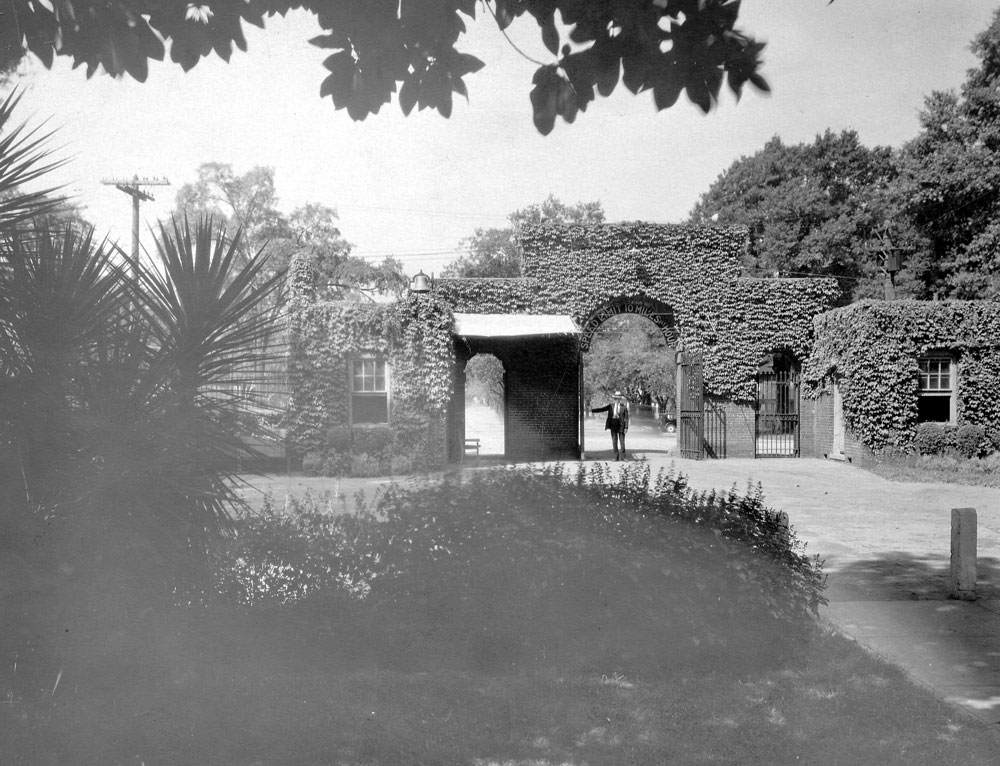Bull Street Campus
Bull Street Campus
The former main campus of the South Carolina State Hospital features an important collection of interrelated buildings that provide insight into the lives of men, women, and children dealing with mental illness – either as patients, caretakers, or family members – from the early 19th century through the end of the 20th century. Their stories and the retention of historically significant buildings have driven Historic Columbia’s preservation advocacy efforts throughout the site’s redevelopment as The BullStreet District, which began in 2015.

Site Significance
Completed in phases from 1857-1885, the sprawling and iconic Babcock Building essentially served as the “front door” for the South Carolina State Hospital, a campus where hundreds of people lived and worked. The village’s “back door” featured structures along Mills Drive that supported the day-to-day operation of the hospital, including the laundry, ice factory, bakery, and fire station.
As philosophies over treatment and medicine changed during the 20th century, doctors and administrators sought to distance themselves from the public’s perception of the hospital as a place of antiquated, inhumane practices and find ways to prepare patients for reentry into larger society following treatment. Hospital staff accomplished this in part through the construction of buildings to the north of Babcock that housed innovative treatment facilities and vocational and social programs. Among them were the Chapel of Hope, Horger Library, and Bennet Auditorium, with the Williams Building serving as the campus’s new “front door.” These structures, along with the Ensor Building, also reinforced the hospital’s connection with mainstream life in Columbia by mimicking residential, commercial, and institutional architectural styles found elsewhere throughout the capital city.
Embedded in the very brick and mortar of these buildings are two centuries of human experience and progress that reveal compelling stories about the ways in which people relate to one another—socially, racially, and through class and gender.
Preservation Victories
By preserving key buildings and the manner in which they relate to one another aesthetically and spatially, the redeveloped campus can still remain historically significant on a national, state, and local level.
Thankfully, key elements of the early-20th century ancillary buildings that stand immediately east of the Babcock Building have enjoyed new life through adaptive use.
Built in 1900, the former bakery building is now the venue of a small work incubator. This structure won a preservation award from Historic Columbia in 2017 as a superior example of adaptive use.
A neoclassical style building erected in 1939 for use as a laboratory and morgue, the Ensor Building underwent rehabilitation for mixed use in 2017. It serves as a visual connection between the historic campus and the baseball stadium, completed in 2016 as a catalyst for the new district.
Erected in 1919 as a support building for Parker Hall—a tuberculosis sanatorium—Parker Annex remains as a tangible link to a period in which Black patients received segregated and subpar healthcare at the hospital. In 2018, Historic Columbia recognized this structure as a successful example of adaptive use with a preservation award.
Preservation Losses
Despite determined and well-documented advocacy by local citizens, in 2013 the City of Columbia signed a development agreement with Hughes Development of Greenville, SC, without providing the requested landmark designation for the campus, or for buildings that individually would have qualified for designation. This oversight, coupled with a decision on the part of the new owners not to pursue the establishment of a recommended National Register of Historic Places district that would have made 45 acres of the former campus eligible for federal, state, and local tax incentives, ultimately led to the demolition of the majority of the Williams Building, Horger Library, and Bennet Auditorium—the latter two of which were Mid-Century Modern expressions of the hospital’s growth during the 1950s. Further losses included the demolition of a collection of former administrative residences, known collectively as the Dix Cottages, in 2020.
Preservation in Progress
Declared obsolete and abandoned in 1994 by the State of South Carolina, the 350,000+ square-foot, Renaissance Revival style Babcock Building has miraculously survived a host of threats—including two fires that collectively gutted its central core and toppled its signature cupola. However, the National Register of Historic Places-listed site is in the process of being redeveloped thanks to historic tax credits, which will ensure its character-defining aspects are maintained according to Department of Interior Standards for the Rehabilitation of Historic Buildings.
Currently, work is underway on the ca.-1887 former laundry building, which will be placed to new use in 2022.
Plans are also in the works for the retention and rehabilitation of the former campus’s Chapel of Hope, a Georgian Revival style building designed by the prominent Columbia firm of Lafaye, Fair, Lafaye and Associates. Erected in 1965 using bricks recycled from the campus’s original walls fronting Bull and Calhoun streets—lowered as part of the administration’s efforts to visually connect the institution with surrounding neighborhoods and demystify mental health care—the spire-topped building will remain as the sole survivor among the buildings that once stood north of the Babcock Building.
-
Resources
WLTX covered the 2020 and 2018 fires to the Babcock Building
Historic Columbia's own John Sherrer spoke with WLTX in the summer of 2017 about the campus's complicated history and potential
In 2017, the National Building Museum in Washington D.C. featured Columbia's Bull Street Campus in their exhibit, Architecture of an Asylum. More information about the Kirkbride Plan is available online.
Under the direction of Dr. Lydia Brandt, graduate students at the University of South Carolina conducted extensive research on the campus's history and its architecture. The project, Digitizing Bull Street, has been made available online.
The 2014 Bull Street Symposium is archived on YouTube.









